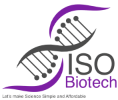Frequently Asked Questions
What happens when I place an order?
We use either DHL or FedEx for international shipping. Delivery should be within 3 weeks of placing an order or payment. You will receive a notification of an expected delivery date upon placement of the order. You will also receive a notification with the tracking number once the kit is shipped.
At what temperature should the IPA be used?
Can I add additional ingredients to the IPA Master Mix?
Can I add one primer before another oligonucleotide?
Can I view the amplified products on an agarose gel?
What is the primer length required for IPA?
Do primers affect IPA sensitivity?
What is the template size required for IPA?
Do my primers require any special or specific purification protocols?
Why do I keep having false positive results?
If your no-template control shows positive, it is mainly due to contamination, especially if the positive control primers in the kit display false positive result when no template is added. Also, contamination can occur if you are handling high copies of the template (106/ µl or above) in the same workspace when carrying out IPA testing.
Like PCR, it is recommended you have a separate pre- and post-amplification workspace and keep a sterile working environment.
We suggest you start your IPA experiment using low quantities of the template (e.g. 500 copies / µl) and discourage opening the tube with a template of more than 10,000 copies / µl.
For endpoint methods like agarose gel, do apply strict contamination control measures, open reaction tubes in post amplification workspace.
To rule out, or clear contamination we suggest decontaminating workspaces with freshly prepared 10% bleach and using fresh master mix aliquots. You may need to repeat this bleach clean-up a few times before removing contamination completely.
My kit arrived at ambient temperature - will it still work?
There is precipitate in my IPA Master Mix, will it still work?
Does primer melting temperature affect IPA reaction?
Does primer concentrations matter?
I have not received my order, what should I do?
Kindly get in touch by emailing customerservice@isobiotech.com.au
